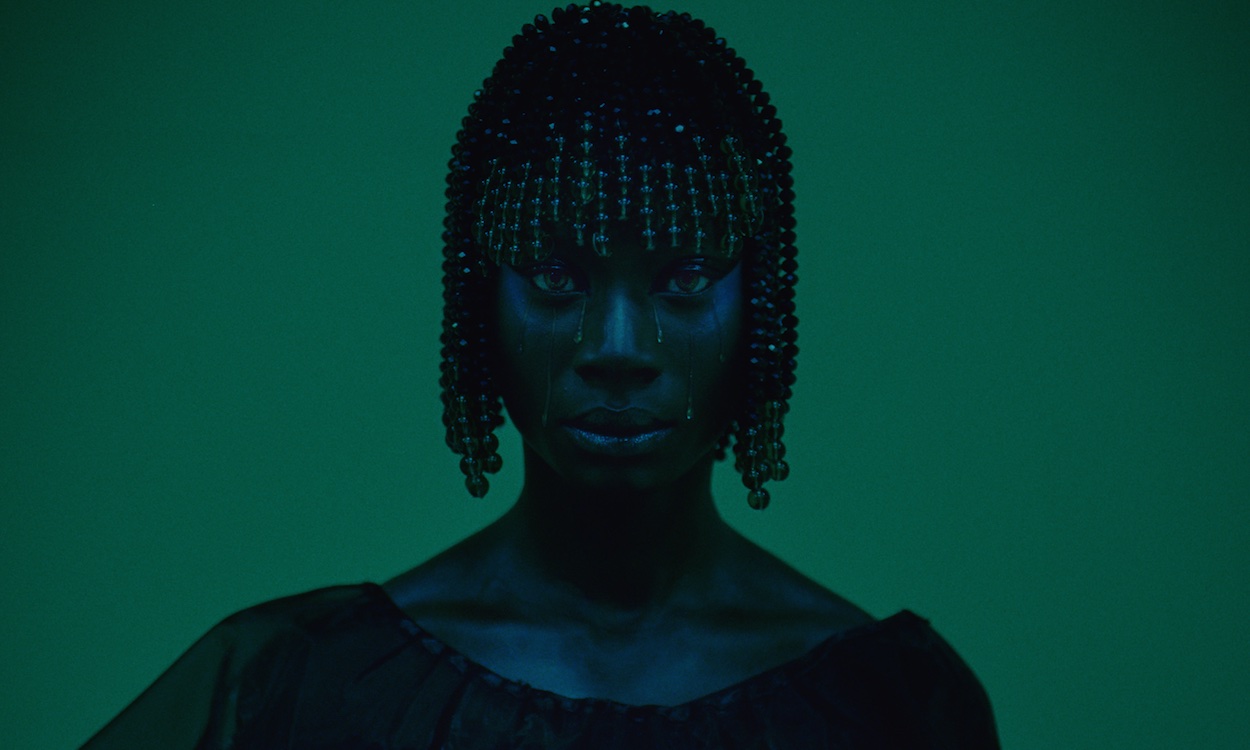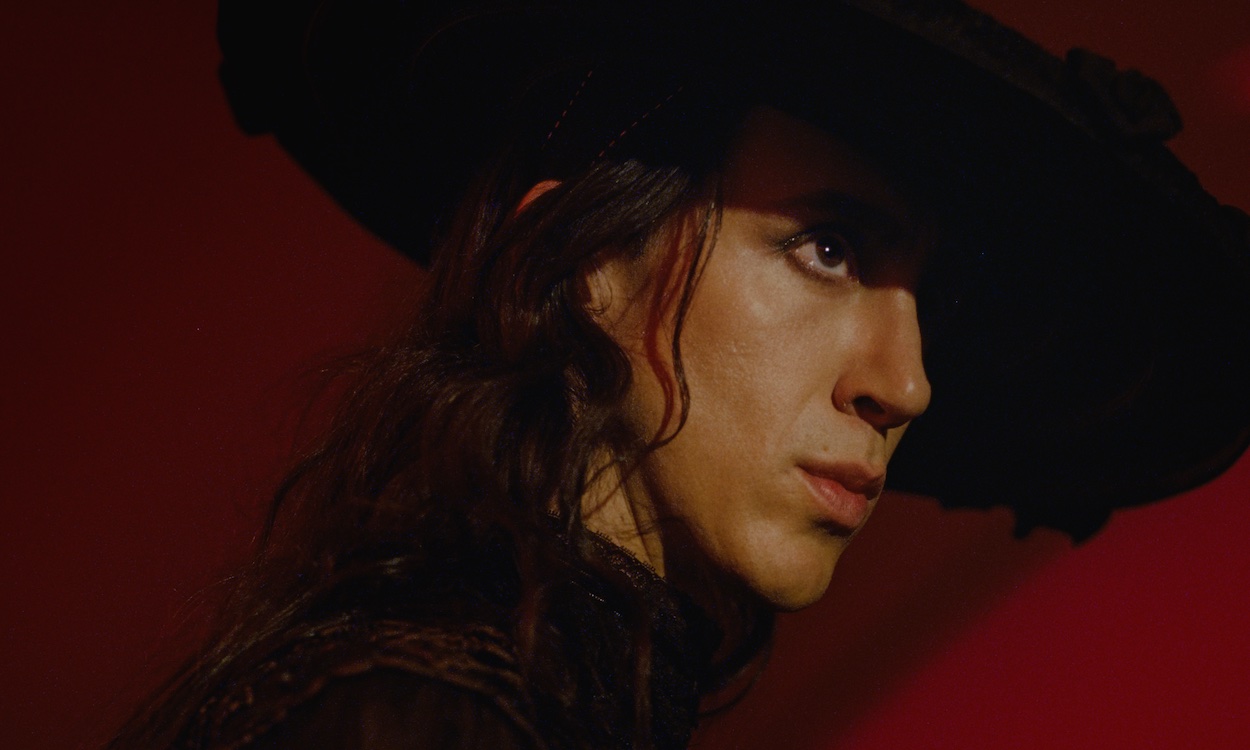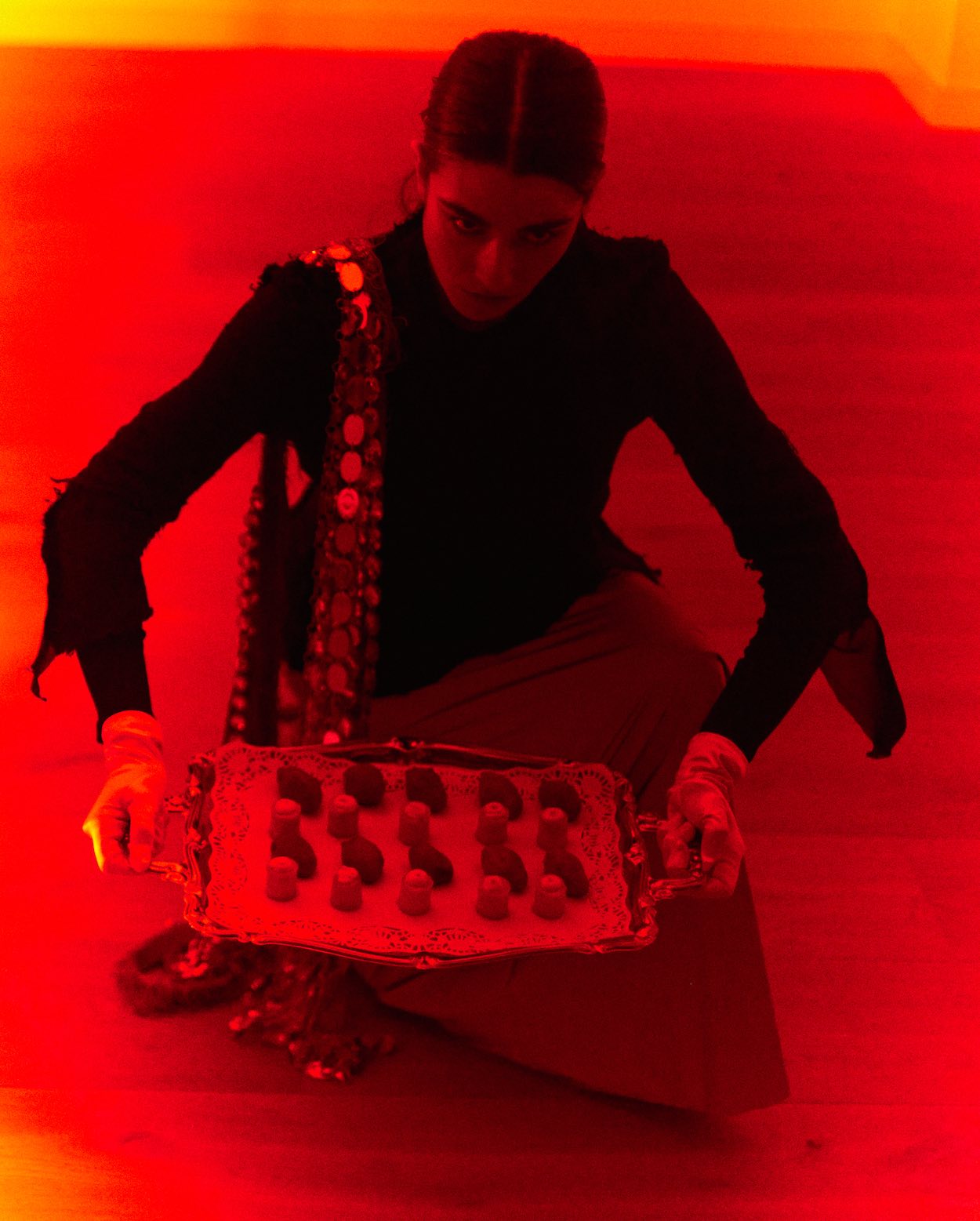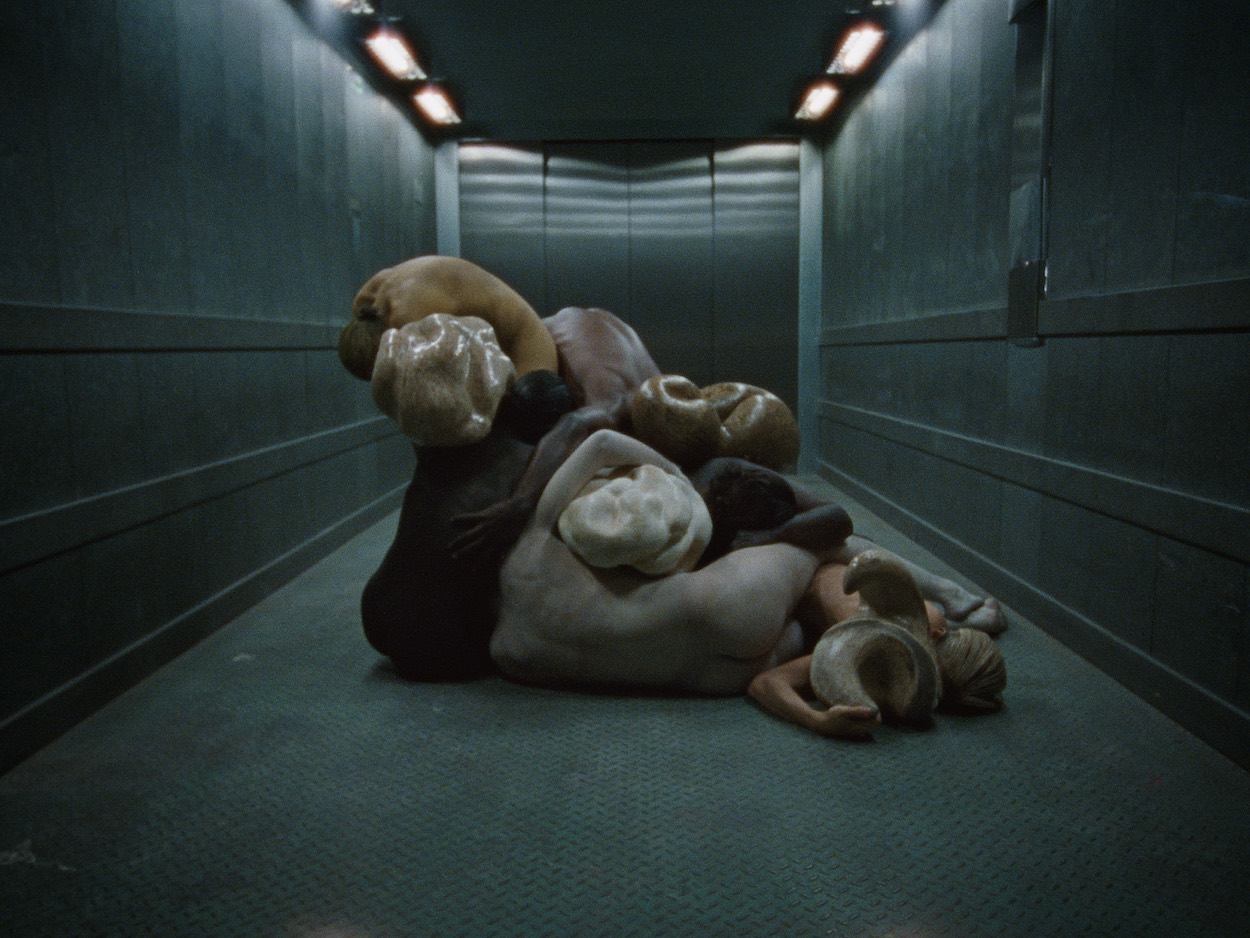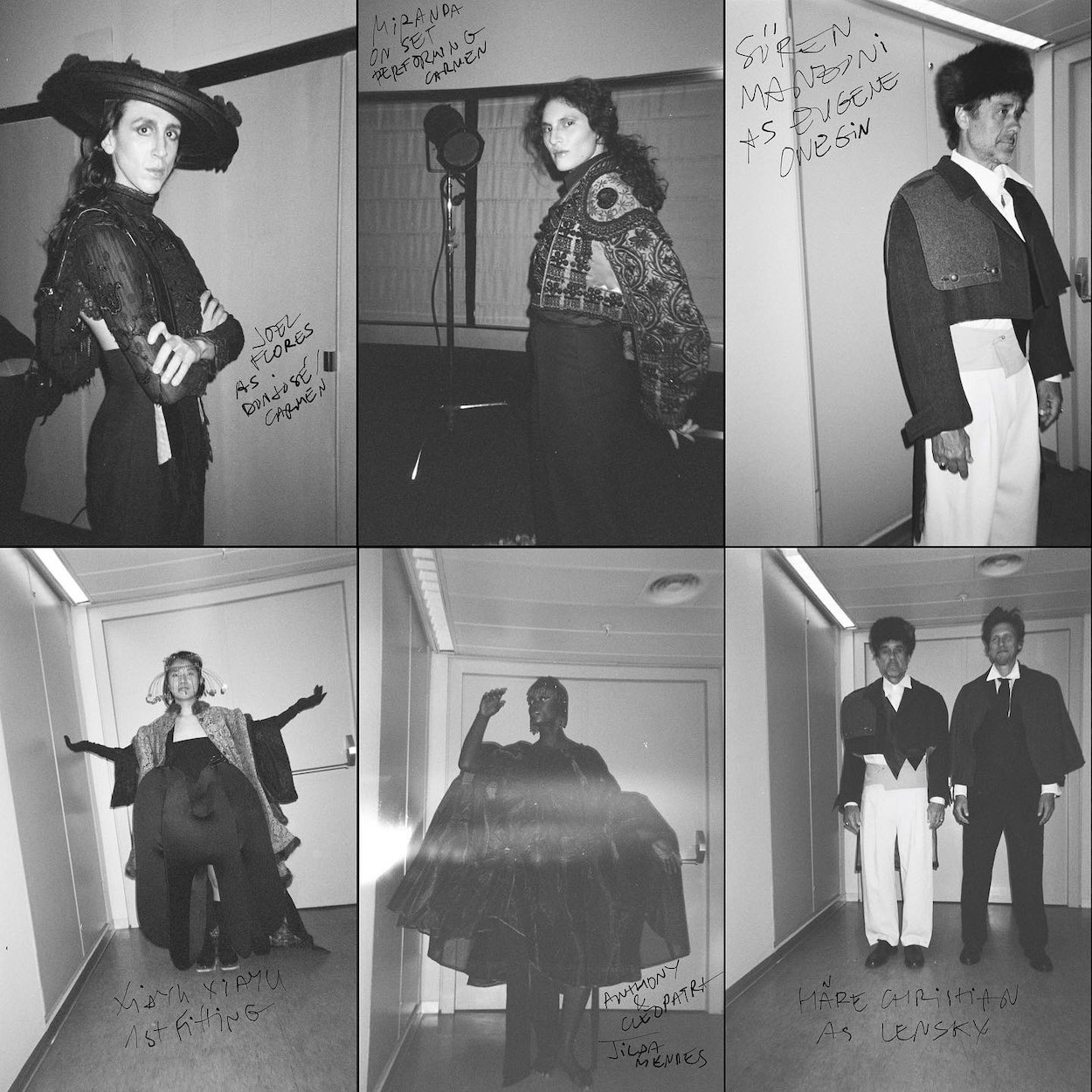Liceu, Four Tragedies in an Act
How did the two of you meet? What first drew you to each other as creatives?
We met ten years ago in Barcelona, and started our relationship in London while Berta was studying fashion design at Saint Martins and Max was finishing his film studies. Berta received a grant to develop a sculpture project and wanted to film the works together with dancers and some costumes she had made with 80 metres of fabric. So we got together to make our first film ‘Mujer Vacio’. Finally, three years ago we decided to create Omotesando.
Max Larruy: What attracted me to Berta is her intuition and her deeply-rooted creative force, that is nourished by something true and immutable that makes her work unique and independent of current fashions. And by this I do not only mean Omotesando’s work, but also her own work as a sculptor.
Berta-Blanca T. Ivanow: What I admire about Max is his temperance when it comes to managing large teams. He has a serenity that calms everyone around him. He is also a great storyteller; stories are woven in his mind and when it comes to developing projects together, I think of images and he always finds meaning in them, giving them an internal narrative.
You’re based in Barcelona. How does your Catalan cultural background influence your creative work?
We were also both born here, but we spent ten years living in different cities; New York, Florence, Madrid, London… We believe that being raised in Barcelona has obviously shaped us as people, a city surrounded by nature with a calmer pace than bigger cities but still an interesting cultural centre. From a young age we both had an interest in the creative world and Barcelona gave us the space to develop and expand our own inner world.
Four Tragedies in an Act is the latest of multiple projects you’ve completed for Barcelona’s Gran Teatre del Liceu. What was your experience of the Liceu, or opera as an art form more widely, prior to your first project with them? How did the collaboration come about?
Collaborating with an opera house, and specifically with the Liceu, had always been on our list of priorities. Opera moves us emotionally and stimulates us creatively. There is something that reminds us of cinema, in terms of a total art and in that capacity to move between the human and the extraordinary. Once the opportunity to work together came up, we didn’t hesitate and we put all our energy into making this collaboration possible. Something wonderful emerged from that very first project, as there was absolute trust and we were allowed to elaborate the whole creative idea of the campaign.
Carmen
The project combines dramatic plot points from four major operas: Anthony & Cleopatra, Eugene Onegin, Carmen and Turandot. Tell us a bit about the process of developing this project and intertwining these stories.
This year we really wanted to focus on the key characters of each Opera. To be able to interpret them in our own way. It was also the perfect year to do so, as this season presented mythical operas with universal and tremendously powerful characters. The concept was simple, four moments from four operas intertwined in the staging. The interesting and challenging part was to choose these moments and recreate them in the theatre itself. With Alvar Riu, the DoP, we wanted to give each scene its own light to give movement and dynamism to the scenes, which in general were more static.
We also decided to shoot in 35mm to capture the melancholic texture of these epic dramas. As for the costumes, together with Vera Moles, we made the costumes for Eugen Onegin & Lensky, working with waxes to give them a more vivid patina. We also managed to collaborate with craftsmen/women who made hats with extraordinary embroidery, and beautiful jewellery that travelled from Poland and Kazakhstan. Gold crowns and pieces of catwalk clothing from local brands. And finally the soundtrack, an essential element of the film. We wanted to move away from the classicism of opera and give it a more contemporary touch, so we reinterpreted a piece from the opera Carmen electronically.
What challenges did you encounter – creative or practical – while shooting the project?
Our enemy is always time. In this case, we had to eliminate an entire scene that we had in the script that was unfeasible to shoot because of time. It was a scene from the opera Ballo in Maschera. A choreographically complex sequence with disturbing and beautiful masks that we had to keep in the drawer of ideas for the future.
Opera famously enjoys a richness in costume design that might seem extravagant in other media, and your work with the Liceu is no different. Berta-Blanca, having trained originally in womenswear, does costume design feature heavily for you when first approaching a new project? In what way?
Berta: For me, the costume not only describes the character, but is also a piece of art in itself. The textures, the details, the volumes, the fabrics. Everything that the gown symbolizes, the act of dressing itself, it’s all a ritualistic act – transformative, festive and utterly sensorial. All the subtlety and love that we dedicate to it is sensed through the screen.
Hoc Est Corpus Meum
Directing as a duo must bring great opportunity not only for creative collaboration but also the fruits of creative friction. What does your workflow as a duo look like, through planning, shooting and post-production – do you assign yourselves different roles according to your individual strengths?
The roles have been assumed in a natural way. I think one of the great advantages is that we both trust each other and we know what makes each other better. This allows us to separate ourselves in the process almost completely because we are both very clear about what we want. Initially we work a lot with references, and this is something we believe in.
Our obsession is that each project has a very clear tone and referential world. As you can see in our work, we are very influenced by references from the world of art, performance, theatre, opera… And to define the tone and find the story we want to tell, we always start by creating a playlist of songs that bring us closer to the film from a more emotional point of view. In pre-production and shooting, Berta is more focused on art direction and costume design while Max focusses on photography and planning the story. Both of us are always involved in choosing and directing the casting, locations and above all in the edit, where most of the critical moments between us take place.
Much of your work is an examination of the human body’s position and movement in space – a topic that is particularly relevant to the theatrical stage, of course. We’re curious to hear about your approach to this – do you plan and choreograph each step and camera movement in storyboarding, or does movement evolve organically once you’re on set?
It always depends a lot on the project. In general, we prefer to have everything as well thought out as possible. From the initial treatment we tend to be very precise and with very clear references of what we are looking for. We don’t feel comfortable going on set without a clear idea of what we want. Especially because we tend to make films that are rich in terms of mise-en-scène and that always involves prior preparation.
Having said that, it is true that there are projects that need a climate of improvisation in a specific scene. In those situations we often put on music as we shoot, because it makes the whole team feel the scene and quickly find the tone we need.
If We Ever Get To Heaven
The fascination with the properties and movement of the human body is no more evident than in your multimedia exhibition HOC EST CORPUS MEUM, currently at the Vasto Gallery. It combines a series of 55 of Berta-Blanca’s sculptures, a live performance and a film directed by the pair of you. How did the idea for this project come about?
Berta: My idea was to develop a sculptural series that explored the concept of corporeality, and then all that physicality could also be presented in a performance, film and exhibition format. The film portrays an amorphous mass of bodies beating in unison, fused and intertwined with ten sculptures. The sculptures are presented as physical deformations. Abstractions of specific parts of the body and its entrails. This sensory, almost ritualistic journey, leads the viewer into the depths of the human being.
You’ve talked before about video being a useful tool for capturing the intimacy of physical, tangible art. In what ways did this filmmaking project differ from your commercial projects as a duo?
The main difference is that in this case we have total creative control and it ends up being 100% Omotesando. Moreover, it was not just a film, but a project that also included a live performance and a sculptural exhibition. For us the audiovisual medium is just another extension to communicate our voice and vision. Obviously, in commercial projects we don’t have total creative control, however, we always try to give the projects a personal vision and never give up what we believe in.
What are you working on next? Is there anything else you’d like to mention?
We are working on a video installation for the retrospective of the opera set designer Alfons Flores and a performance together with a fashion brand for Milano Fashion Week. Longer term we are writing the script for our first film.
Four operas in process
Interview by Becca Nichols
INFO:
Omotesando is represented by Paola Nasini Agency for Europe.
@paolanasiniagency
Omotesando website
Omotesando: @omotesando____
Max Larruy: @maxlarruy
Berta-Blanca: @ombredansleau and @___887l
FOUR TRAGEDIES IN AN ACT
A film by OMOTESANDO
Featuring Sau Ching, Soren Manzoni, Mireia Lez. Hare Christian, Joel Flores, Jilda Mendes, Anel Rinat, Xiayu Shang
Cinematographer Alvar Riu
Costume designer Vera Moles
Art director Alexandra Jordana
Producer Jana Llopart
Soundtrack Nil Ciuro
Opera singer Carmen Mateo
Edit Xavi Trilla Martes Studio
Color grading Marti Somoza
Makeup & hair Johny Dean
Script Voice over Joan Burdeus
Head of production Amal Martinez
Graphic design Ana Baenas
Still Photography Nereis Ferrer
1AC Hector Juol
2AC Joel
Gaffer Ferranglightcrew
VFX La Remedios Studio
Sound Studio SonoXl
1AD Naranja
PA Alex Gantzer Palauinho Noaga
Assistant Costume design Laia Zaragoza
Special thanks to
Primo, Napalm Rentals, Backlightcrew, Juliaestruga, Maison Vivas Carrion, Lluis Colom, Claudia Lepik, Rafa Peinador
HOC EST CORPUS MEUM
Un film de @omotesando____
Escultura @ombredansleau
Exposición en @vasto_gallery
Performers @anna_s_sher Clara Tena @pogliefrancesca @miquelamengualgual @telfa_don1 @mdemontparnasse
DOP @carlosfeher
Movement director @lauraalcalafreudenthal & @___887l
Make-up & Hair Artist @bymonicamarmo
Editor @simongarciaminaur
Soundtrack @nilciuro
voice @montserrat_sero
Colorist @marti.somoza.color
Artist Assistant @anrinat & @afruitsbruises & @sarahestracke
Graphic Design @banan.pdf
Still Photography @anouk_nitsche
Makeup & hair assistant Cris Guda + @ana.sanchezzpe
Assistant director @anastasiiiakulyk
1AC Alfredo Suárez “Pana”
Gaffer @jan.haase__
2AC Duna Marcos Roger
Runner Elen Ivanow
Agradecimientos @primocontent @carmenrc_ @corarodriguezl @conchasconchitas @martinkalina
